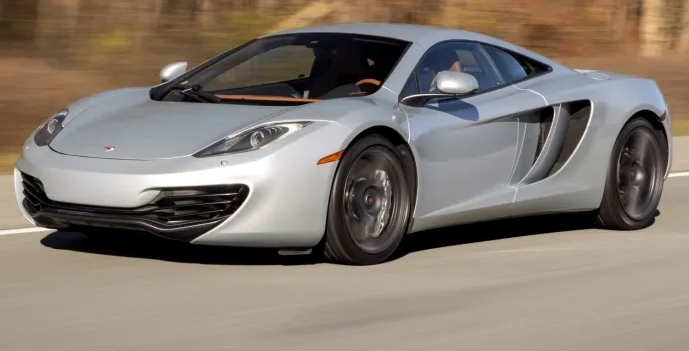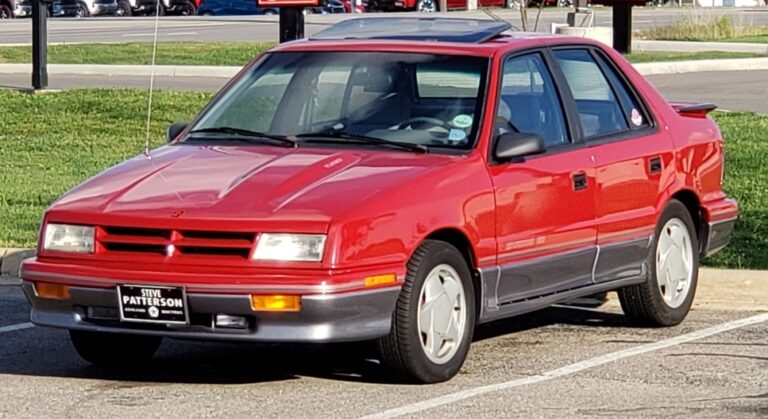The McLaren MP4-12C Evolution: A Revolution Forged on the Track and Refined for the Road
The year is 2011. For over a decade, McLaren Automotive had been a name synonymous with Formula 1 dominance and the legendary F1 supercar. But a new chapter was about to unfold, one that would redefine the supercar landscape and cement McLaren’s independent automotive prowess. Enter the McLaren MP4-12C, a machine born from motorsport DNA yet meticulously engineered for the discerning road-going enthusiast. Its arrival wasn’t just the introduction of a new car; it was the unveiling of a revolutionary philosophy, setting a benchmark for performance, technology, and driver engagement that would reverberate through the industry for years to come.
Born from a Need for a New Era (2011-2014): The Original MP4-12C
The MP4-12C, often simply referred to as the 12C, was the first series-production car from McLaren Automotive since the iconic F1. Its development was a labor of love and a testament to the company’s deep roots in racing. The “MP4” designation harked back to McLaren’s successful F1 program, signifying “Marlboro Project 4,” a partnership that yielded numerous championships. The “12” represented the car’s rating on McLaren’s internal performance index, and the “C” stood for Carbon, a nod to its groundbreaking construction.
Launched in 2011 and entering production shortly after, the MP4-12C was an immediate sensation. Its design, penned by Frank Stephenson, was a masterclass in functional beauty. Aerodynamics were paramount, with a sleek, low-slung silhouette and distinctive dihedral doors that opened upwards, offering both dramatic flair and practical ingress and egress. The sculpted bodywork wasn’t just for show; it was meticulously sculpted in wind tunnels to generate downforce and optimize airflow for cooling and performance.
Beneath the skin lay the real revolution. The MP4-12C was built around a one-piece carbon-fiber composite chassis tub, a technology previously reserved for exclusive hypercars like the F1 and race cars. This “MonoCell” offered unparalleled rigidity, lightweight construction, and exceptional safety. This was a significant departure from competitors who, for the most part, still relied on traditional aluminum or steel chassis.
Powering this carbon marvel was McLaren’s own M838T twin-turbocharged 3.8-litre V8 engine. Developed in-house, this engine was a marvel of engineering, producing a potent 592 bhp (600 PS) and 600 Nm (443 lb-ft) of torque in its initial guise. Crucially, the engine was positioned behind the driver, contributing to the car’s balanced mid-engine layout.
Transmitting power to the rear wheels was the equally innovative SSG (Seamless-Shift Gearbox). This 7-speed dual-clutch transmission, developed in collaboration with Ricardo, was designed to offer lightning-fast gear changes without any interruption in power delivery, mirroring the experience of a racing sequential gearbox. It featured unique “Pre-Cog” functionality, allowing the driver to lightly touch the shift paddle to pre-select the next gear, further enhancing the responsiveness.
The suspension system was another area where McLaren showcased its engineering prowess. The MP4-12C featured McLaren’s ProActive Chassis Control (PCC) system. This sophisticated hydraulic system used interconnected fluid channels to act as active anti-roll bars, eliminating the need for traditional, heavy anti-roll bars. This allowed for a remarkable duality: the car could offer a compliant ride during normal driving, yet instantly stiffen up to provide exceptional cornering stability and minimal body roll at the limit.
The interior was a minimalist, driver-focused cockpit. The attention to detail was evident, with high-quality materials and a focus on ergonomics. The central touchscreen housed most of the car’s controls, and the digital instrument cluster provided all the necessary information. The seats, though racing-inspired, were surprisingly comfortable for longer journeys.
.

.
The First Evolution: The 2012 MP4-12C and the Canada Edition
While the 2011 model year saw the initial launch, the 2012 model year brought subtle but significant refinements. McLaren listened to early feedback and introduced improvements to the engine mapping, gearbox software, and aerodynamic efficiency. While the core specifications remained largely the same, these updates aimed to further enhance the driving experience and solidify the 12C’s position as a true performance benchmark.
In 2012, McLaren also released a special edition: the MP4-12C Canada Edition. This was a limited-run model created to celebrate the brand’s entry into the Canadian market. While not a distinct “trim level” in the traditional sense, it featured exclusive badging, unique wheel options, and specific interior trim elements to mark its special status. It was essentially a bespoke offering built upon the existing MP4-12C platform.
The Arrival of More Power and Style: The MP4-12C Spider (2012)
Recognizing the growing demand for open-top motoring in the supercar segment, McLaren unveiled the MP4-12C Spider in late 2012, with production commencing for the 2013 model year. The Spider was not merely a coupe with the roof chopped off. McLaren engineers meticulously reinforced the carbon-fiber MonoCell chassis to maintain structural rigidity without adding significant weight. The result was a convertible that retained the coupe’s exceptional driving dynamics.
The Spider’s most distinctive feature was its one-piece retractable hardtop. This innovative roof could be deployed or stowed in just 17 seconds at speeds of up to 19 mph (30 km/h). When retracted, it stored neatly beneath a tonneau cover behind the seats, allowing for a sleek, uninterrupted profile.
Power output remained the same as the coupe at 592 bhp, and the car retained the same advanced chassis and drivetrain technologies. The Spider offered the same thrilling performance and exhilarating open-air driving experience, solidifying McLaren’s commitment to offering a comprehensive range of supercars.
The Refinement and Enhanced Performance: The 2013 MP4-12C
For the 2013 model year, McLaren introduced further enhancements to both the MP4-12C coupe and Spider. The most significant upgrade was a power increase to 616 bhp (625 PS) and 600 Nm (443 lb-ft) of torque. This boost in power was achieved through revised engine mapping and improved turbocharger efficiency.
Beyond the power bump, McLaren also refined the aerodynamics. A slightly reshaped front splitter and a larger rear diffuser contributed to increased downforce, enhancing stability at high speeds. The ProActive Chassis Control system received further tuning for improved responsiveness and ride comfort.
The interior also saw minor updates, including an improved infotainment system and new interior trim options. The focus remained on a clean, driver-centric design, but these small refinements further elevated the sense of luxury and refinement.
The Apex of the 12C Era: The 2014 MP4-12C
The 2014 model year represented the final iteration of the MP4-12C before its eventual replacement by the 650S. While the core platform remained, McLaren continued to refine and enhance the package. The power output remained at 616 bhp, but further optimizations to the engine and gearbox software contributed to even sharper throttle response and quicker gear changes.
Aerodynamic refinements continued, with subtle tweaks to the bodywork aimed at further improving downforce and cooling. The ProActive Chassis Control system was again honed, offering an even more engaging and precise driving experience.
The interior saw the introduction of new standard features and optional upgrades, including an improved Meridian sound system and a wider array of bespoke customization options through McLaren’s MSO (McLaren Special Operations) division. These final touches ensured that the MP4-12C bowed out at the pinnacle of its development, a testament to McLaren’s relentless pursuit of perfection.
Models and Trim Levels Summarized:
It’s important to note that McLaren, in line with its philosophy of treating each car as a bespoke creation, didn’t typically offer a wide array of “trim levels” in the traditional automotive sense for the MP4-12C. Instead, the focus was on a highly configurable base model with optional upgrades and extensive personalization through MSO.
However, to categorize the evolution, we can identify the primary models and their key differentiating factors:
- McLaren MP4-12C (2011-2014):
- Years Produced: 2011, 2012, 2013, 2014
- Key Features: Carbon-fibre MonoCell chassis, 3.8L twin-turbo V8, SSG 7-speed dual-clutch transmission, ProActive Chassis Control.
- Power Output Evolution:
- 2011-2012: 592 bhp
- 2013-2014: 616 bhp
- McLaren MP4-12C Canada Edition (2012):
- Years Produced: 2012 (Limited production)
- Key Features: Based on the 2012 MP4-12C, with exclusive badging, unique wheel options, and specific interior trim elements.
- McLaren MP4-12C Spider (2012-2014):
- Years Produced: 2012 (launched late 2012, production for 2013), 2013, 2014
- Key Features: Same as the coupe but with a one-piece retractable hardtop and reinforced MonoCell chassis.
- Power Output Evolution: Same as the coupe for the respective model years.
Beyond the MP4-12C: The Legacy of Innovation
The McLaren MP4-12C was more than just a successful supercar; it was a statement of intent. It proved that McLaren could design, engineer, and manufacture its own road cars to rival and surpass established players. The technologies pioneered in the 12C – the carbon-fiber chassis, the ProActive Chassis Control, the twin-turbo V8 – became foundational for subsequent McLaren models.
In 2014, the MP4-12C was succeeded by the McLaren 650S, which was effectively an evolution of the 12C, incorporating many of the lessons learned and offering a more powerful and visually distinct package. However, the MP4-12C’s impact cannot be overstated. It re-ignited McLaren’s passion for automotive production and set a new standard for what a modern supercar could be. It was a car built on the principles of the race track, meticulously refined for the road, and a true revolution in its time. Its legacy continues to inspire and influence the supercars of today, a testament to its groundbreaking engineering and enduring appeal.







